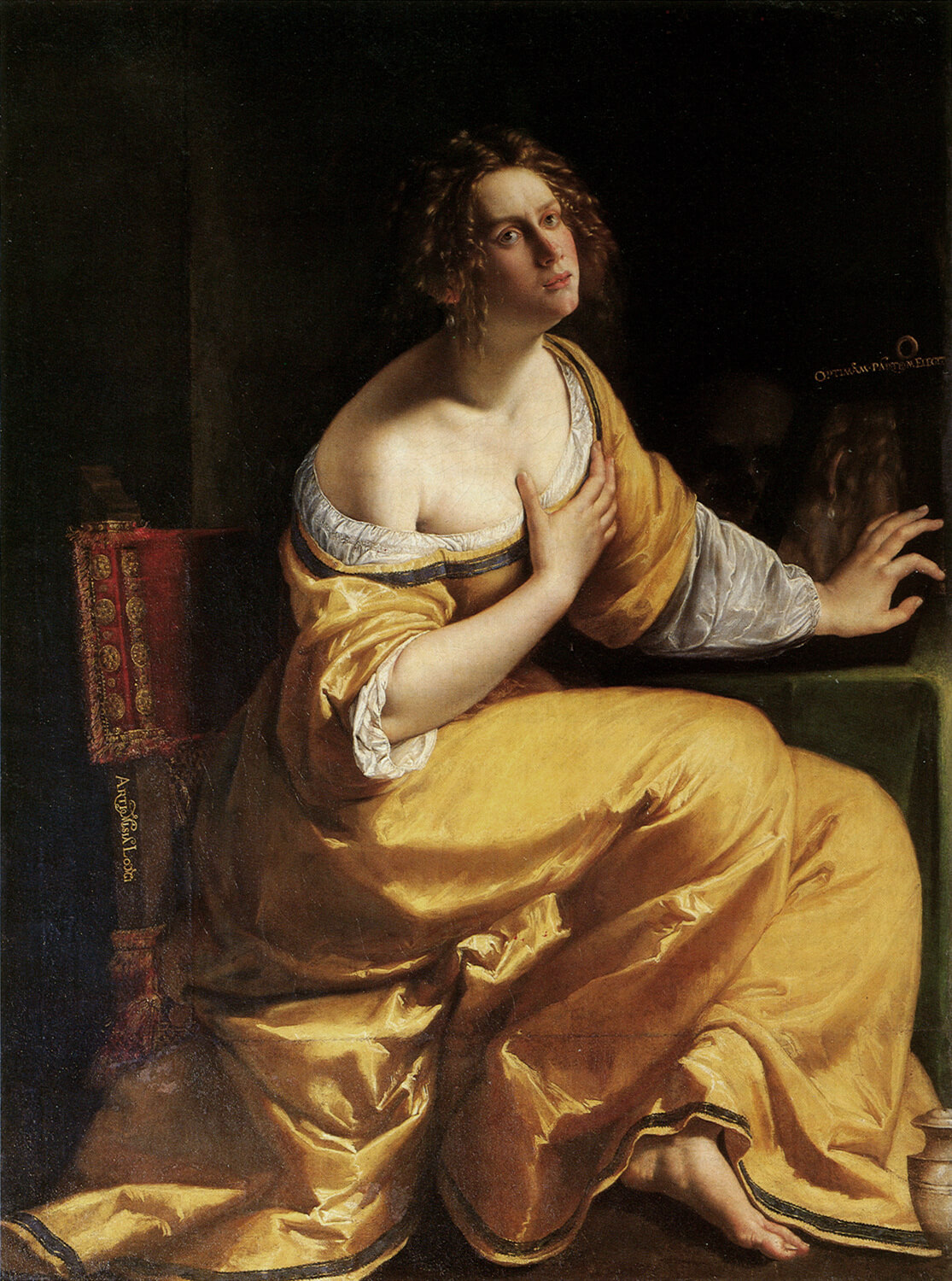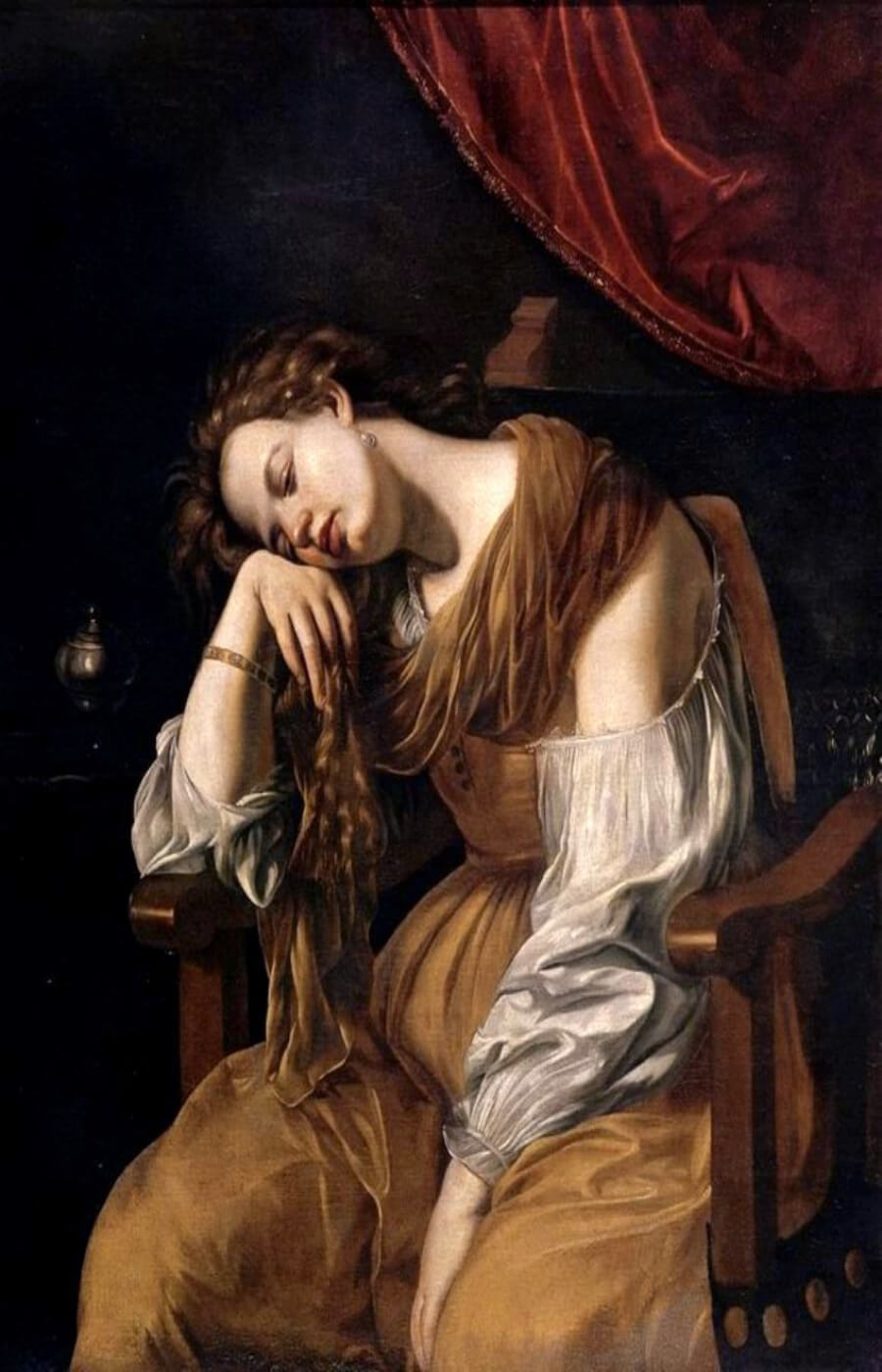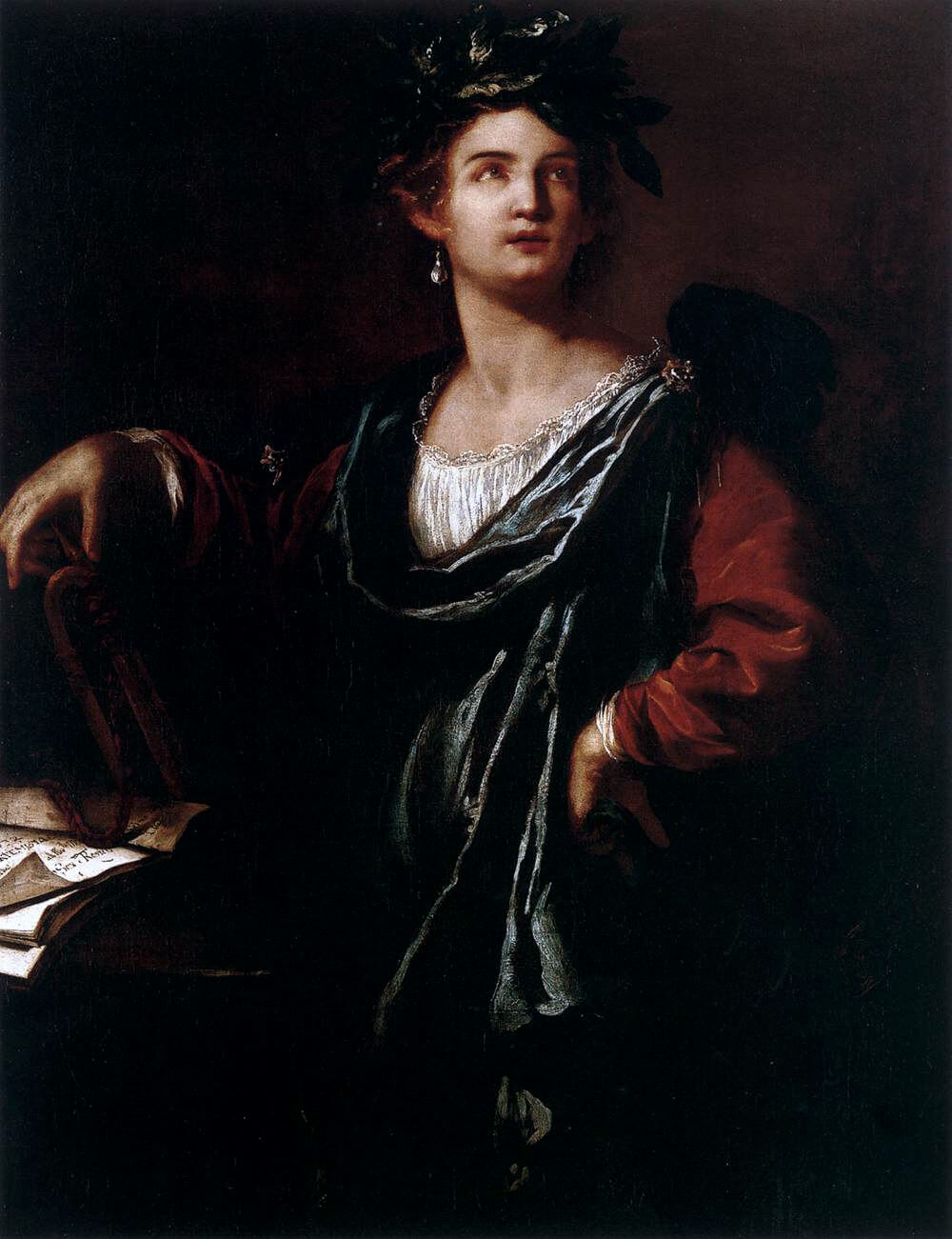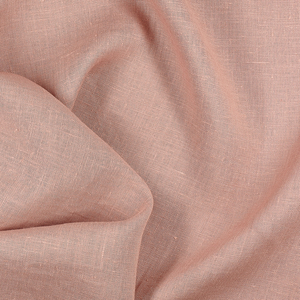FS Colour Series: Marsala Inspired by Artemisia Gentileschi’s Baroque Red
The pioneering Baroque painter Artemisia Gentileschi painted a world of rich, decadent and warm tones like MARSALA, which she coupled with dramatic, heightened chiaroscuro. Her paintings draw us into private worlds where theatrical, sometimes terrifying stories play out, or melancholic heroines are overcome with strong emotion. As the most successful female painter of her day, she often focussed on female subjects, painting martyred women who had suffered great loss or found strength in the face of adversity, reflecting the struggles she, too, had overcome in her long and eventful life. Baroque shades of red aided in her storytelling capacities, adding flashes of tension, passion or drama into her scenes.
Gentileschi was born in 1653 to a large family in Rome. The eldest of five, she trained as a painter with her father, the established artist Orazio Gentileschi, who prepared her for the life of an artist from a young age. Paintings made while she was still in her teenage years reveal her profound technical skill, particularly her ability to convey the star effects of light and shadow that came to define the Baroque era. Her father wrote to one of his patrons in 1612 how “she has in three years become so skilled that I can venture to say that today she has no peer.” It is likely that she encountered the art of Caravaggio during her early years, and her own art can be compared with his stark, spotlit tenebrism.
In the years that followed she set up her own studio in Florence, following her marriage to the artist Pierantonio Stiattesi. It was a prolific and fruitful period for Gentileschi, when she found her first true taste of artistic independence. In her early career painting St. Mary Magdalene, 1620, she paints the Biblical heroine drenched in a golden silk gown, hand to her breast and forlorn in expression as she accepts her chosen fate of a life lived in virtue. Behind her the plush velvet chair is a deep shade of passionate red on which she turns her back, forgoing the worldly pleasures to which others would succumb.
Gentileschi separated from her husband in the 1620s, leaving him for a life in Rome in amongst world-leading painters with whom she felt a deep kinship. She returned to the same Biblical martyr in Mary Magdalene as Melancholia, 1622-25, this time painting her as a figure of resigned sadness, shoulders slumped and head drooped down onto her hand. Stark white light casts a golden, luminescent glow across her skin and clothing, while in the background a deep crimson drape swoops in and fills the right corner, a symbolic gesture of passion which glints as it creases in the raking light, echoing the glistening pink of her lips.
Gentileschi settled in Naples in 1630, where she was able to secure a steady stream of commissions from high profile patrons including the Infanta Maria of Spain, members of the Italian nobility and foreign royal houses. She remained here for the rest of her life, despite what she called the “warlike tumults, the badness of life, and the expense of things” in a despairing letter to her patron, Andrea Cioli, minister at the Medici court.
In the mature painting Clio, 1632, we see Gentileschi experimenting with a looser handling of paint, demonstrating her confident self-assuredness as an artist. The subject here is Clio, the mythological muse of history, who was often depicted in art wearing a laurel crown, while staged alongside an open book and a trumpet. Posed in a bold, confident stance with head held high and hand on one hip, she is drenched almost completely in darkness, save for a flash of bright light that catches her skin and clothing. This light reveals the decadent, sumptuous red of her sleeves, which contrast sharply with her otherwise blue and white attire, adding a flash of warmth, depth and intensity to this forceful and all-powerful woman, which could just as easily represent Gentileschi herself.


















































2 Comments
Kathleen Smith
Fascinating.
More here:
https://www.newyorker.com/magazine/2020/10/05/a-fuller-picture-of-artemisia-gentileschi
Joelle Fischer
Thank you for all your posts. I learn so much each time!